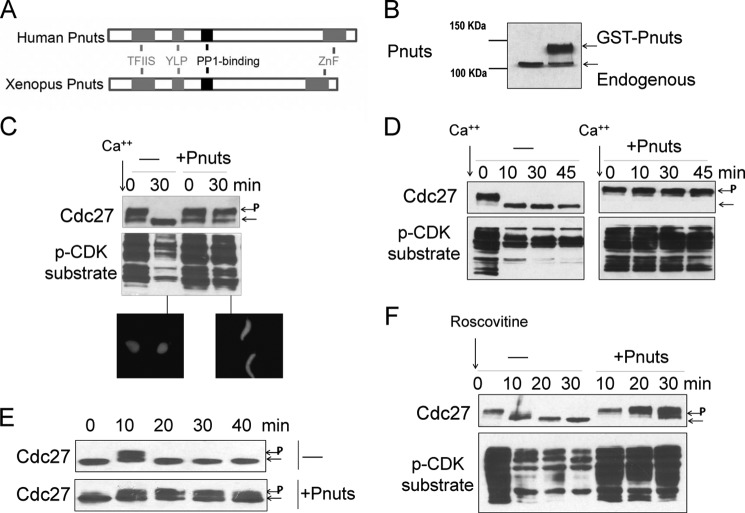FIGURE 1.
Pnuts regulates M-phase exit. A, schematic representation of human and Xenopus Pnuts proteins showing domains conserved from Xenopus to human. TFIIS, transcription elongation factor II-like domain; YLP, telomeric repeat binding factor 2-binding motif; ZnF, zinc finger domain. B, the addition of purified recombinant Xenopus Pnuts in Xenopus egg extracts. The relative amount of endogenous and exogenous Pnuts is shown by immunoblotting using an anti-Pnuts antibody. C, calcium (40 nm) was added to CSF Xenopus egg extracts with or without exogenous Pnuts as in panel B. Samples were taken at the indicated time points and immunoblotted for Cdc27 and Phospho-CDK (p-CDK) substrates. Phosphorylated Cdc27 is indicated by P. Extracts were supplemented with sperm nuclei and monitored for the morphology of sperm nuclei, stained with DAPI. D, calcium was added to CSF Xenopus egg extracts with or without exogenous Pnuts to induce M-phase exit. Samples were taken at the indicated time points and immunoblotted for Cdc27 and Phospho-CDK substrates. E, cycling extracts in the absence or presence of exogenous Pnuts were examined for Cdc27 phosphorylation. F, the CDK inhibitor roscovitine (0.5 mm) was added to CSF extracts in the absence or presence of exogenous Pnuts and incubated at room temperature for 30 min. Extract samples were taken at the indicated time points and immunoblotted for Cdc27 and phospho-CDK substrates.

